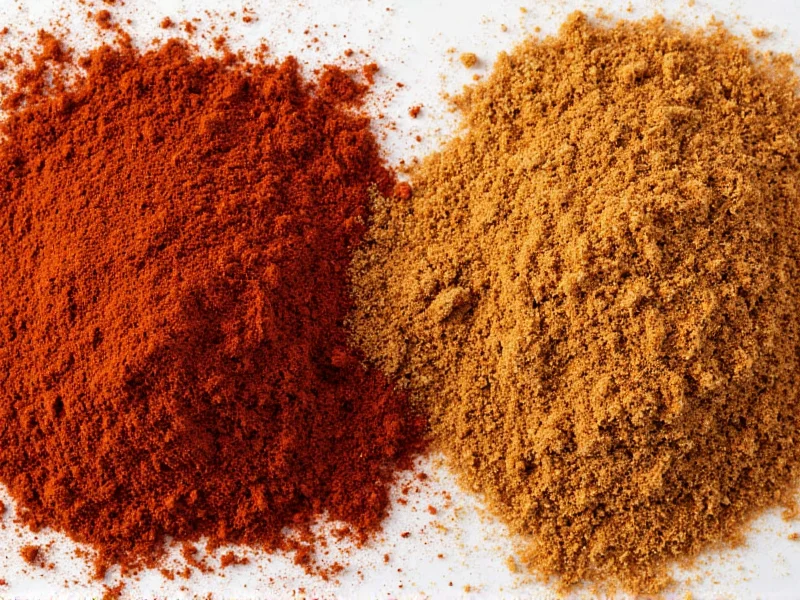Understanding Allspice: The "One-Spice Wonder"
Allspice, despite its name suggesting multiple spices, is actually a single dried berry harvested from the Pimenta dioica tree, native to Central America and the Caribbean. The name comes from its complex flavor profile that resembles a combination of cinnamon, nutmeg, and cloves. When you're exploring allspice vs five spice differences, it's crucial to recognize that allspice is a singular ingredient, not a blend.
Historically used by indigenous peoples in the Americas, allspice became popular in European kitchens after Spanish explorers brought it back from the New World. Its warm, sweet-spicy flavor makes it essential in jerk seasoning, pickling spices, and many Caribbean dishes. In baking, allspice adds depth to pumpkin pie, gingerbread, and fruit compotes. The what is allspice made of question has a straightforward answer—it's simply the dried unripe berry of one specific plant.
Decoding Chinese Five Spice: The Harmonious Blend
Chinese five spice powder represents a completely different concept from allspice. As the name suggests, it's a carefully balanced blend of five distinct spices that together create harmony according to Chinese culinary philosophy. The traditional what is Chinese five spice composition includes:
| Spice | Flavor Contribution | Percentage in Blend |
|---|---|---|
| Star Anise | Sweet licorice notes | 30% |
| Cloves | Intense warmth and pungency | 20% |
| Chinese Cinnamon | Subtle sweetness | 25% |
| Sichuan Pepper | Citrusy, numbing sensation | 15% |
| Fennel Seeds | Mild anise flavor | 10% |
This blend aims to balance the five fundamental flavors in Chinese cuisine: sweet, sour, bitter, salty, and umami. Unlike allspice which comes from one source, five spice combines multiple elements to create something greater than the sum of its parts. When considering allspice and five spice comparison, remember they originate from completely different culinary traditions with distinct philosophical approaches to flavor.
Key Differences Between Allspice and Five Spice
The most fundamental difference between these two seasonings lies in their composition. Allspice is a single ingredient that resembles multiple spices, while five spice is an actual blend of five different spices. This distinction affects everything from flavor profile to culinary applications.
Flavor-wise, allspice offers warm, sweet notes reminiscent of holiday baking, while five spice delivers a more complex experience with sweet, savory, and slightly numbing elements. The Sichuan pepper in five spice creates a unique mouthfeel that allspice cannot replicate. When examining allspice vs five spice recipes, you'll notice allspice appears in Caribbean stews, Middle Eastern meat dishes, and American baking, while five spice features prominently in Chinese braises, roasted meats, and marinades.
When to Use Each Spice Blend
Understanding when to use allspice versus when to use five spice prevents culinary disasters. Allspice shines in:
- Jamaican jerk chicken and pork
- German sauerkraut
- Moroccan tagines
- Apple and pumpkin desserts
- Pickling mixtures
Five spice powder works best in:
- Chinese red-cooked dishes (like pork belly)
- Duck and poultry marinades
- Stir-fries requiring depth
- Asian-inspired barbecue rubs
- Steamed fish preparations
Attempting to substitute one for the other usually disappoints because they serve different flavor purposes. While you might ask can I substitute allspice for five spice in a pinch, the results rarely satisfy authentic flavor expectations.
Substitution Possibilities and Limitations
When you run out of either spice, understanding appropriate substitutions matters. For allspice, a mixture of ½ teaspoon cinnamon, ¼ teaspoon nutmeg, and ¼ teaspoon cloves can approximate its flavor in most recipes. This allspice substitute works reasonably well in baking and stews.
Creating a five spice substitute requires more precision. Combine 2 parts star anise, 1 part cloves, 1 part Chinese cinnamon (or regular cinnamon), ½ part Sichuan pepper, and ½ part fennel seeds. Grind to a fine powder. Note that omitting Sichuan pepper changes the essential character of the blend.
Neither spice makes an adequate substitute for the other. Allspice lacks the complexity and numbing element of five spice, while five spice doesn't replicate allspice's singular warm sweetness. Professional chefs treating allspice vs five spice differences with respect achieve better results than those attempting direct substitutions.
Storage and Freshness Tips
Both spices lose potency over time but require slightly different storage approaches. Keep whole allspice berries in an airtight container away from light and heat—they maintain freshness for 2-4 years. Ground allspice stays potent for 1-2 years.
Five spice blend, being a mixture of ground spices, degrades faster. Store it in a dark glass container in a cool cupboard for up to 1 year. For maximum flavor, consider making small batches of five spice as needed rather than buying large commercial quantities that may have been sitting on shelves.
Common Misconceptions Clarified
Many home cooks confuse these spices because of their numerical names. Remember: allspice isn't actually multiple spices, and five spice always contains exactly five components in traditional preparations. The allspice vs five spice confusion often stems from assuming both are blends.
Another misconception involves regional variations. Some five spice blends substitute cassia for Chinese cinnamon or omit Sichuan pepper entirely, altering the authentic flavor profile. True Chinese five spice maintains the specific balance of all five elements.











 浙公网安备
33010002000092号
浙公网安备
33010002000092号 浙B2-20120091-4
浙B2-20120091-4